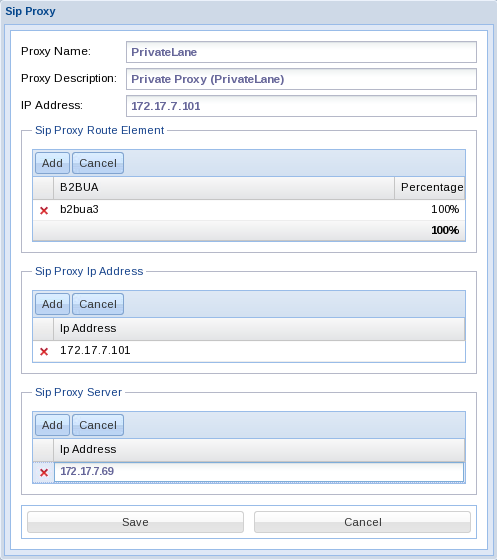System
SYSTEM
In this chapter, technical details of the network topology described in chapter 1 are managed.
SIP Proxy
This table defines the SIP proxies that will handle the calls. The proxies serve as the public face of the SKY DANCE system.
Note: You will want to setup the list of B2BUA's in the system prior to adding proxies.

Click the checkbox of the proxy you want to edit and click the edit button to edit it. The following screen will be displayed.

In the first section "B2BUA", each b2bua that will be used for media handling and routing can be setup, along with the percentage of traffic that each should be allocated.
The SIP Proxy IP Address list is used to setup which addresses the SIP Proxy will listen on for incoming calls.
The SIP Proxy Server Section is used to list the OAM&P addresses that will be used for secure shell access to the server which physically hosts the proxy.
Once you are done, click Save to save your changes.
SIP B2BUA
This table defines the list of B2BUAs associated with the SIP Proxies.

SIP Route Server
In this option the routing servers â are defined. These servers are responsible for managing the static and automatic routing.

You can add and delete routing servers of the list by using the corresponding buttons.
SIP Route Server Cluster
In the process, the Back to Back User Agent â queries the routing servers and in return, the routing servers will deliver the list of qualified suppliers to terminate the call. In this table the pair of routing servers that the B2BUA query, are defined.

The percentage of calls a B2BUA will consult to a routing server or the other is defined in the SIP Route Server Cluster. For example, in row 1 of figure 39 the User Agent queries the routing server Madrid and Miami in the same percentage of calls.
You can add and delete SIP Routing Server Clusters of the list by using the corresponding buttons.